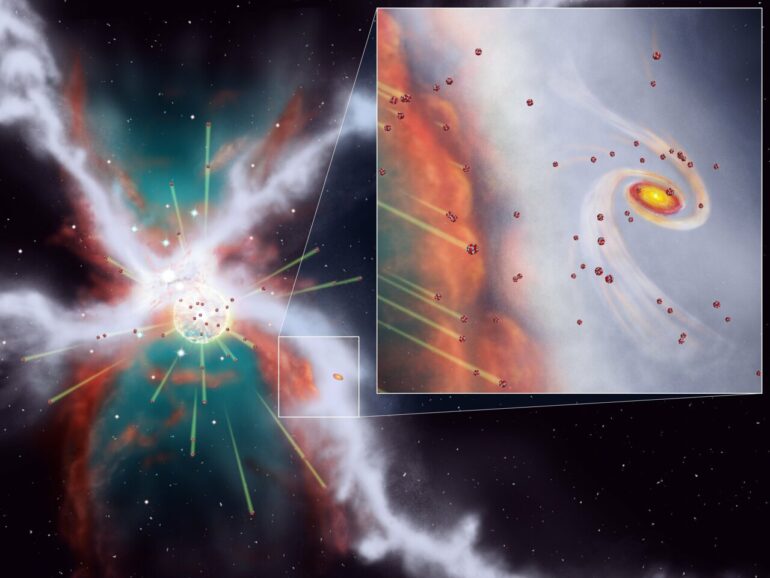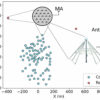Isotope ratios found in meteorites suggest that a supernova exploded nearby while the sun and solar system were still forming. But the blast wave from a supernova that close could have potentially destroyed the nascent solar system. New calculations shows that a filament of molecular gas, which is the birth cocoon of the solar system, aided the capture of the isotopes found in the meteorites, while acting as a buffer protecting the young solar system from the nearby supernova blast.
The study, titled “Insights on the Sun Birth Environment in the Context of Star Cluster Formation in Hub–Filament Systems,” was published in The Astrophysical Journal Letters on April 25, 2023.
Primitive meteorites preserve information about the conditions at the birth of the sun and planets. The meteorite components show an inhomogeneous concentration of a radioactive isotope of aluminum. This variation suggests that an additional amount of the radioactive aluminum was introduced shortly after the solar system started forming.
A nearby supernova explosion is the best candidate for this injection of new radioactive isotopes. But a supernova that was close enough to deliver the amount of isotopes seen in meteorites would have also created a blast wave strong enough to rip the nascent solar system apart.
A team led by Doris Arzoumanian at the National Astronomical Observatory of Japan proposed a new explanation of how the solar system acquired the amount of isotopes measured in meteorites while surviving the supernova shock. Stars form in large groups called clusters inside giant clouds of molecular gas. These molecular clouds are filamentary. Small stars like the sun usually form along the filaments and large stars, which will explode in a supernova, usually form at the hubs where multiple filaments cross.
Assuming that the sun formed along a dense molecular gas filament, and a supernova exploded at a nearby filament hub, the team’s calculation showed that it would take at least 300,000 years for the blast wave to break up the dense filament around the forming solar system.
The components of meteorites enriched in radioactive isotopes formed in approximately the first 100,000 years of solar system formation inside the dense filament. The parent filament may have acted as a buffer to protect the young sun and helped catch the radioactive isotopes from the supernova blast wave and channel them into the still forming solar system.
More information:
Doris Arzoumanian et al, Insights on the Sun Birth Environment in the Context of Star Cluster Formation in Hub–Filament Systems, The Astrophysical Journal Letters (2023). DOI: 10.3847/2041-8213/acc849
Provided by
National Astronomical Observatory of Japan
Citation:
Molecular filament shielded our young solar system from supernova, suggests study (2023, June 22)



